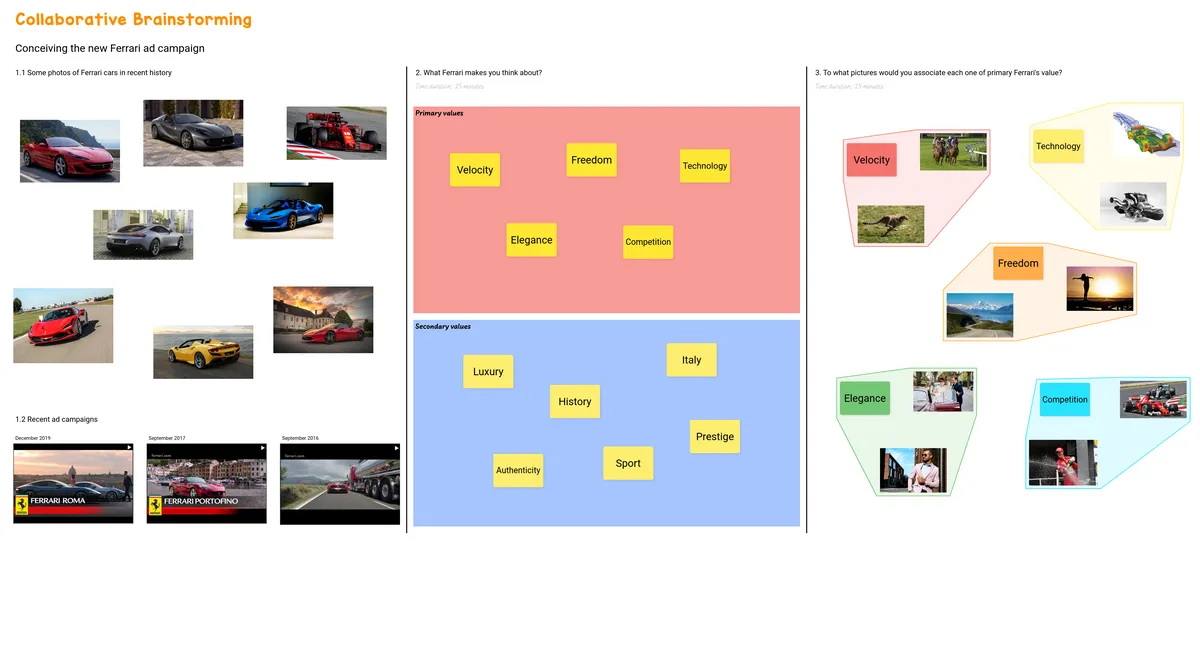What is Collaborative Brainstorming?
Collaborative Brainstorming is a technique of ideation and problem-solving developed by the advertiser Alex Osborn in the 1940s. The objective of brainstorming is to structure meetings so as to fluidify collaboration and stimulate the emergence of new ideas, in particular, by offering all the members of the team a space favorable to express original proposals.
Brainstorming can intervene at the beginning of a project to pool ideas and initiate collaboration or during it to solve a specific problem or determine an action plan.
Brainstorming has 5 main functions:
- Generating new ideas: when you embark on a new project, brainstorming collectively makes it possible to bring out ideas and confront them with a creative goal. It works as an association system, an idea calling another, which can itself be decisive.
- Share his vision: during a project, team members can have various opinions about the strategy to follow. In brainstorming, they exchange their points of view calmly to advance toward a common operational or strategic objective.
- Prioritize and make decisions: the team meets to view all the tasks to be performed, prioritize them and make decisions. Brainstorming can be used as an organizational tool to construct an action plan.
- Solving problems: during a project's life, the team may have to manage unforeseen events. The Collaborative Brainstorming technique effectively pools the team's skills to find a solution quickly.
- Take stock: at the end of a project, for example, to feed a continuous improvement approach, Collaborative Brainstorming offers the team the opportunity to make a retrospective of the project.
How to run Collaborative Brainstorming?
For the Collaborative Brainstorming session to be optimal, it must respect certain principles. The facilitator brings together the team and clearly sets out the brainstorming objective and the rules to follow. These can vary depending on the teams and their goals, nevertheless we systematically find the following two principles:
- The suspension of judgment: all participants freely and serenely express their ideas without fear of exposing themselves to derogatory remarks on the part of their employees.
- The speaking time: to ensure all the team members are involved, everyone has a minimum speaking time.
Collaborative Brainstorming generally revolves around two phases, a phase of "divergence" and a phase of "convergence":
- At first, the session must promote the emergence of new ideas. Everyone expresses themselves and issues proposals. To stimulate creativity, this phase of divergence can accommodate ideation activities, such as games or scenarios. Participants contribute through notes, images, links to websites, videos, files, or even drawings throughout the brainstorming session. The diversity of the media used promotes associations of ideas and enriches the creative process.
- Ideas must be organized to exploit the fruit of the workshop. They are sorted according to criteria defined by the project framework, then categorized and prioritized to establish a list of initiatives. The so-called convergence phase begins when the time allocated to the emergence of new ideas is elapsed.
